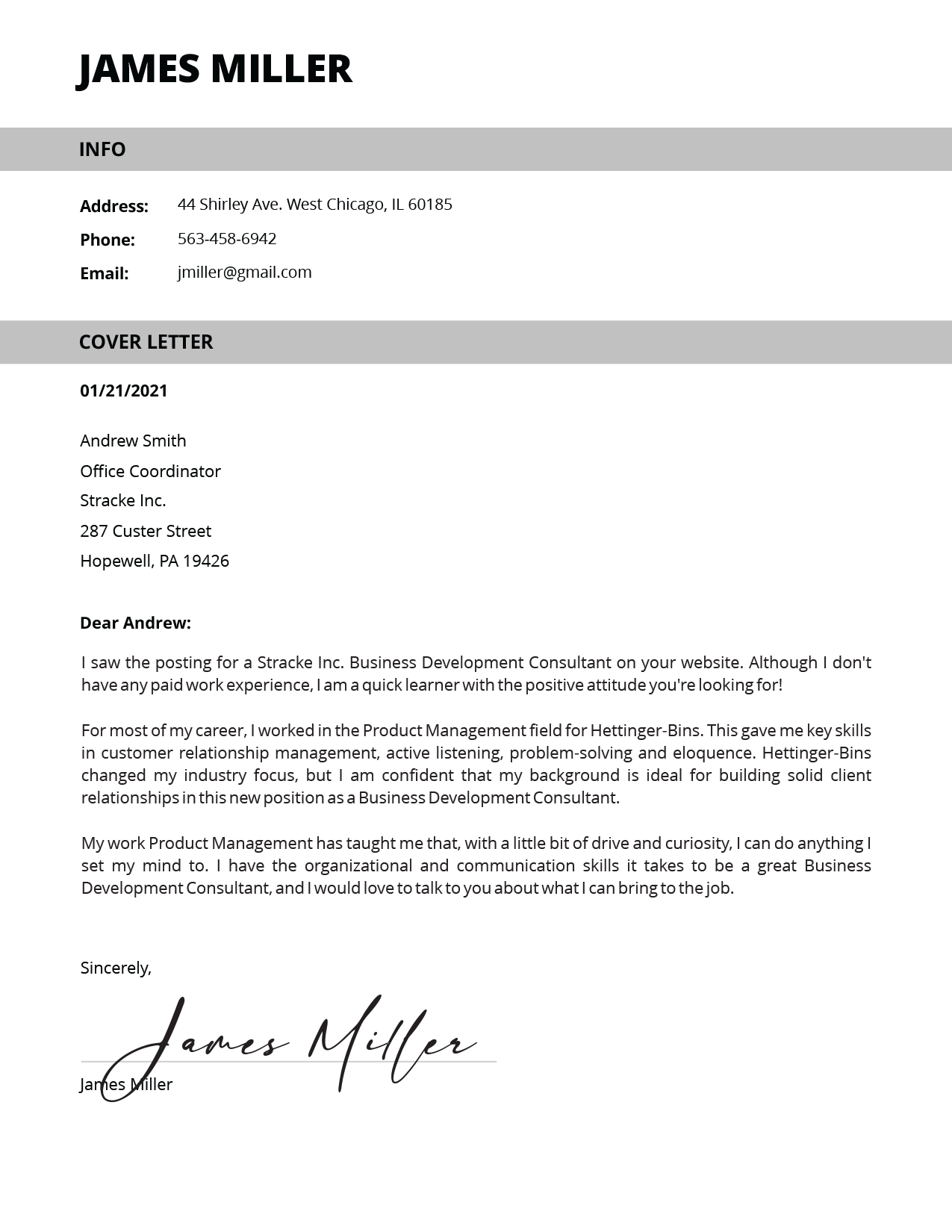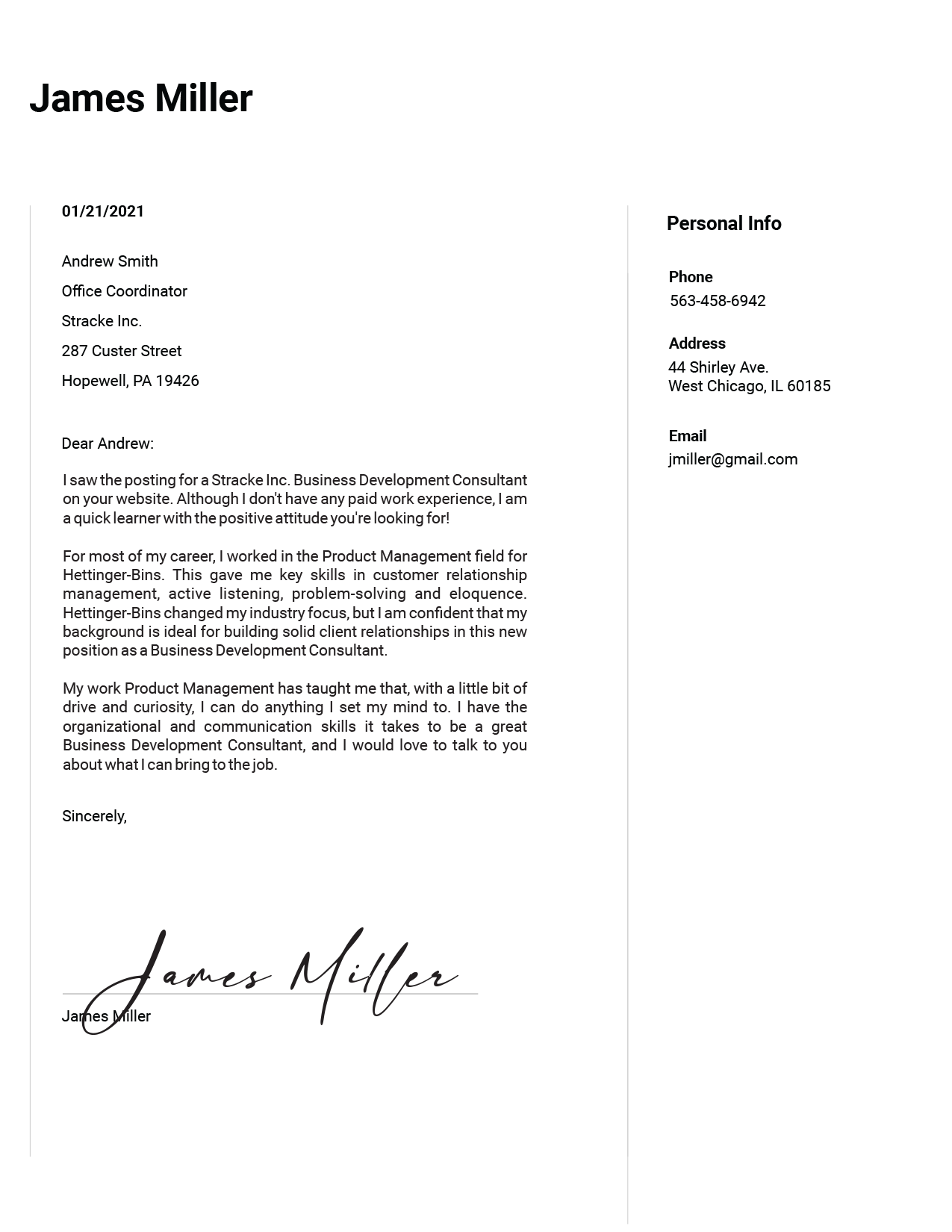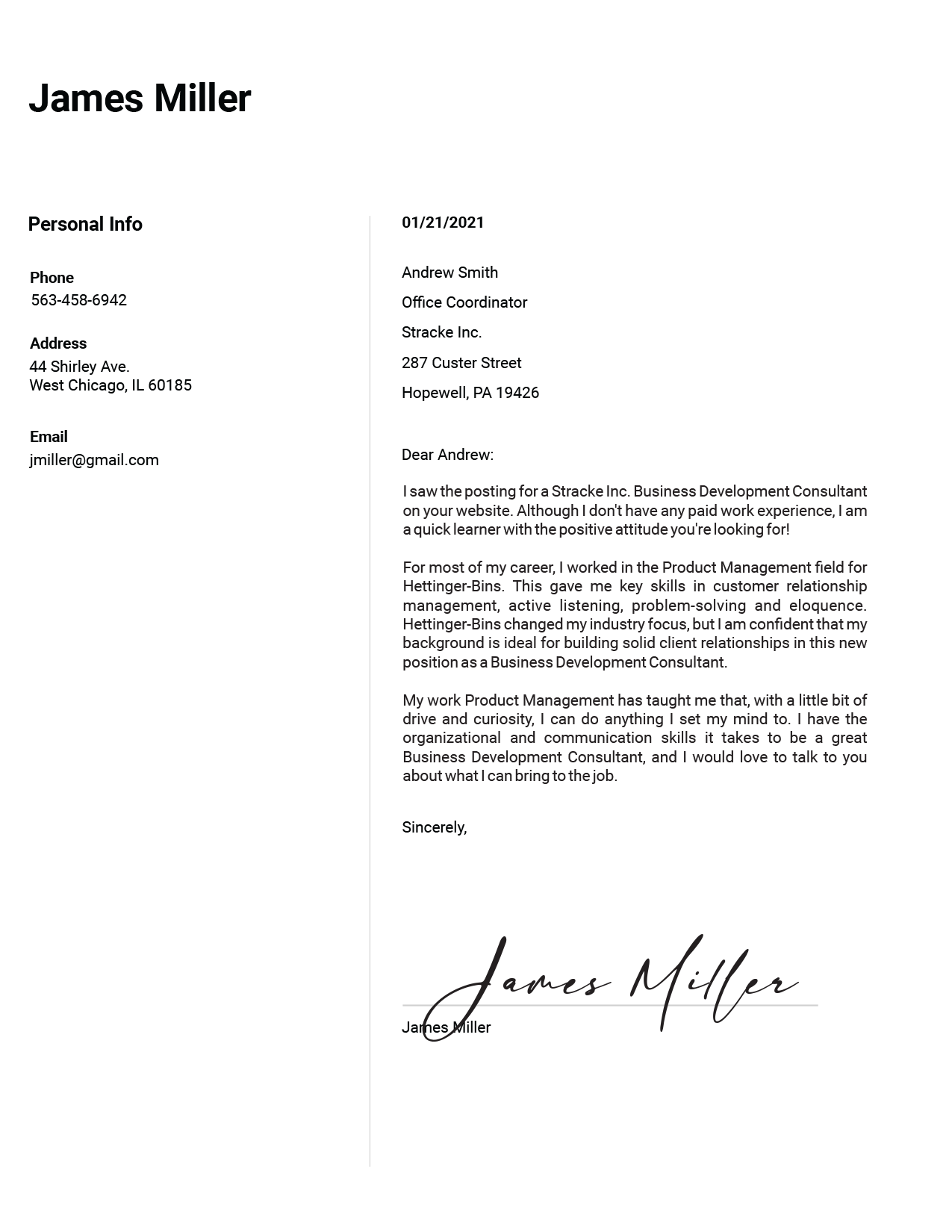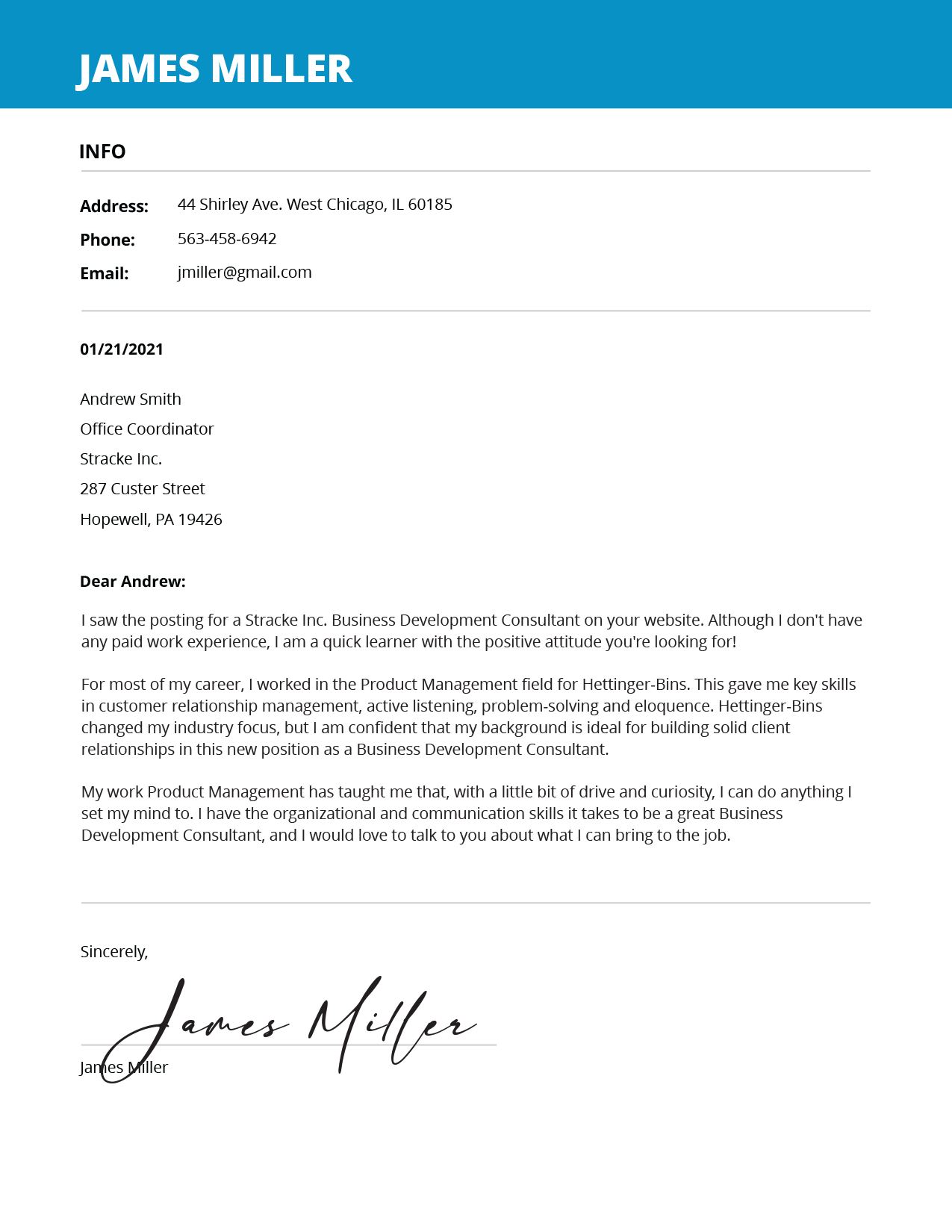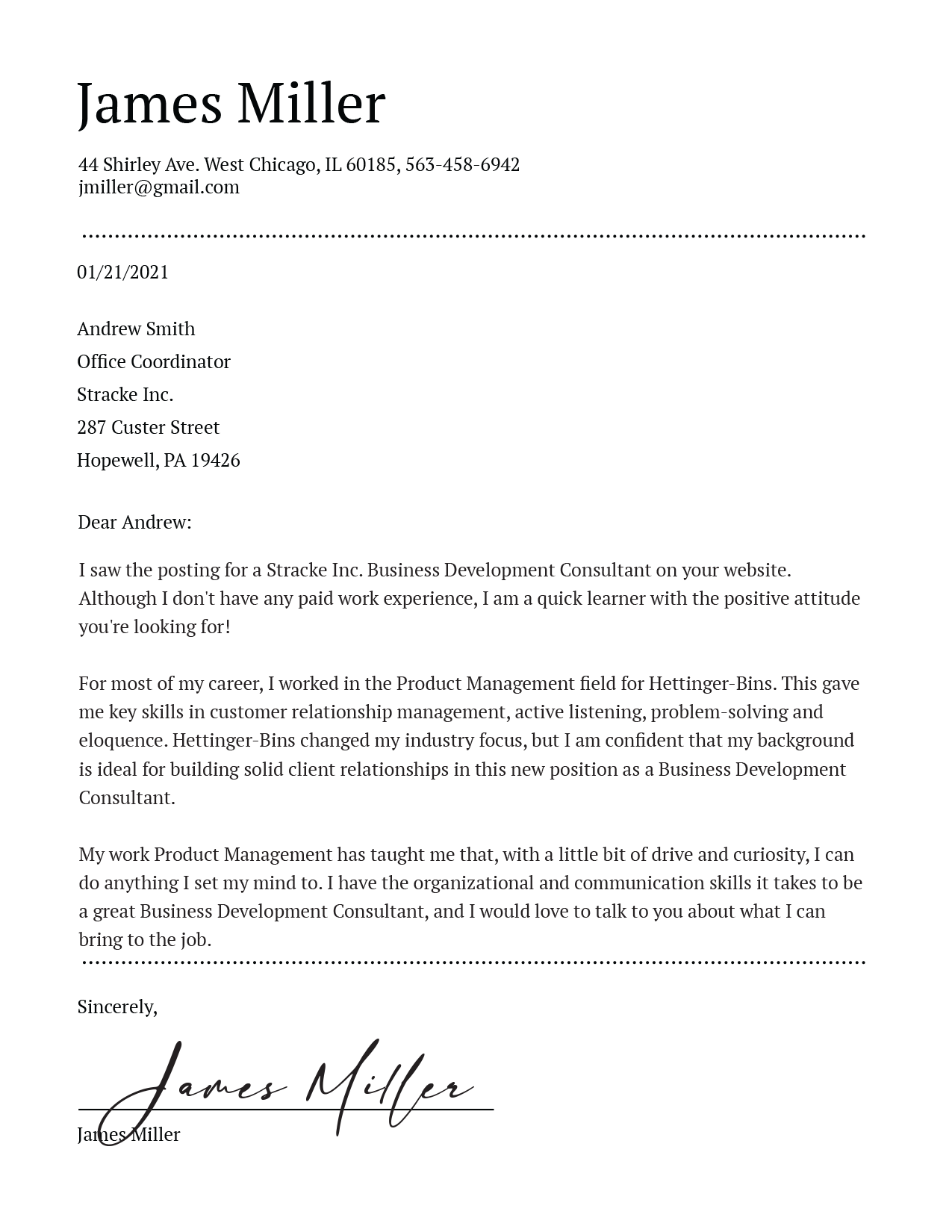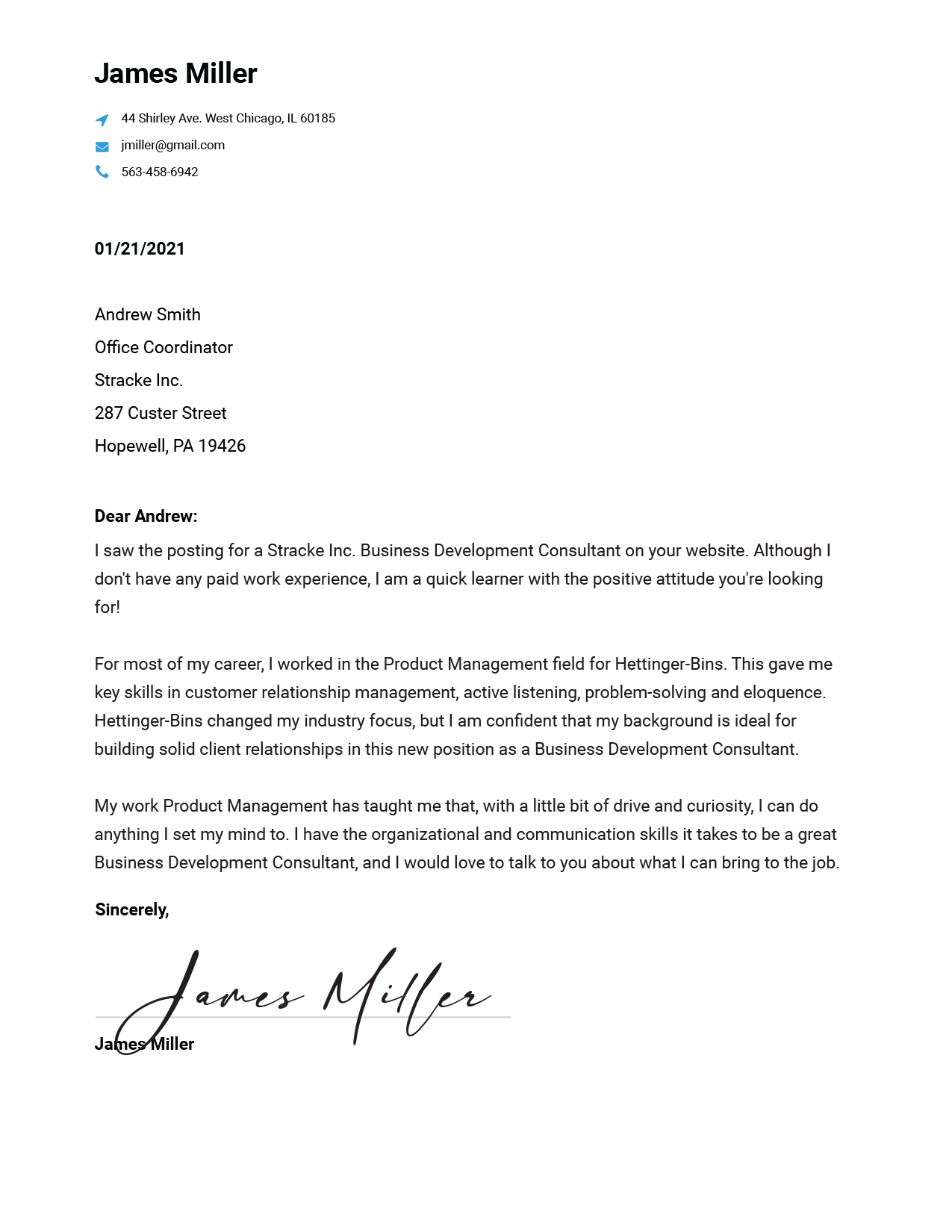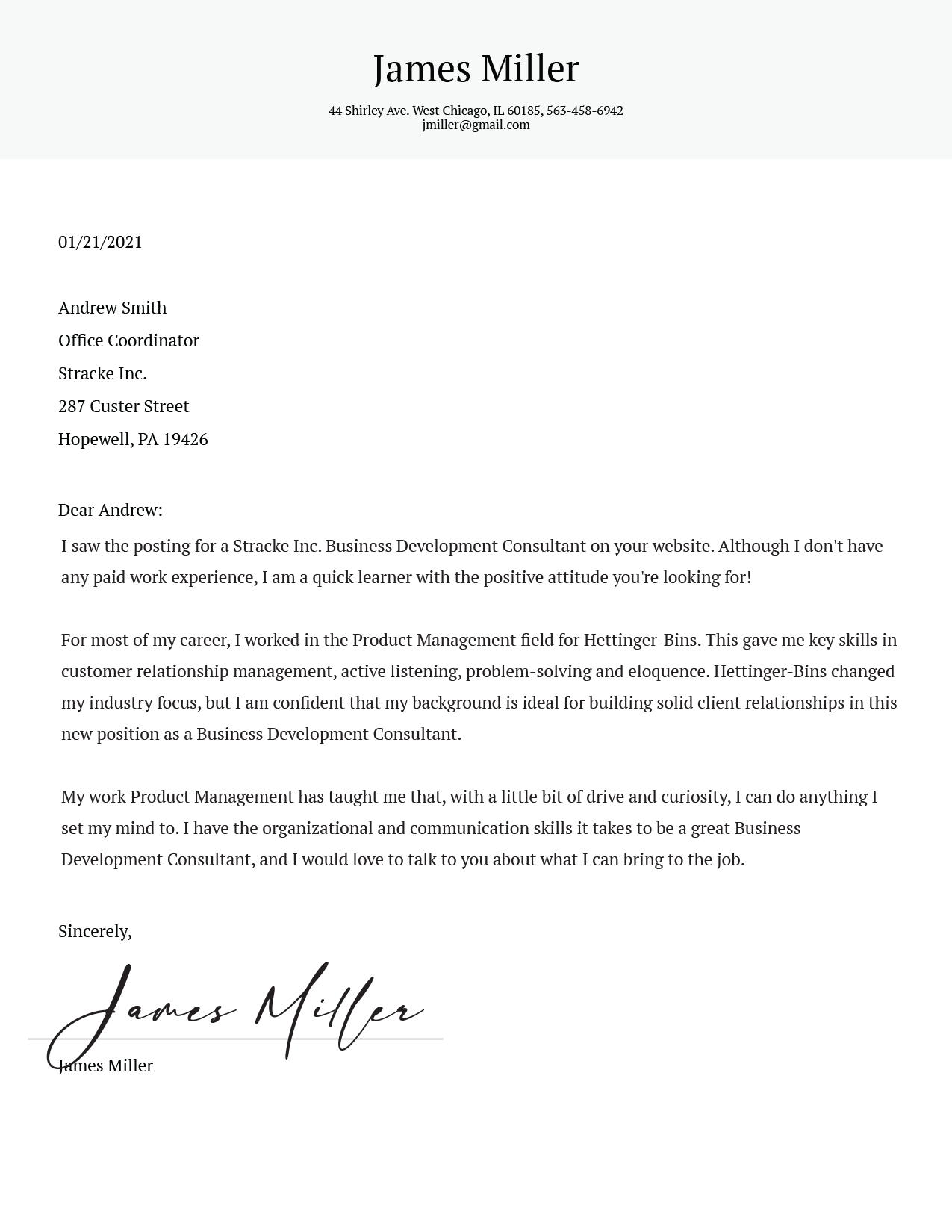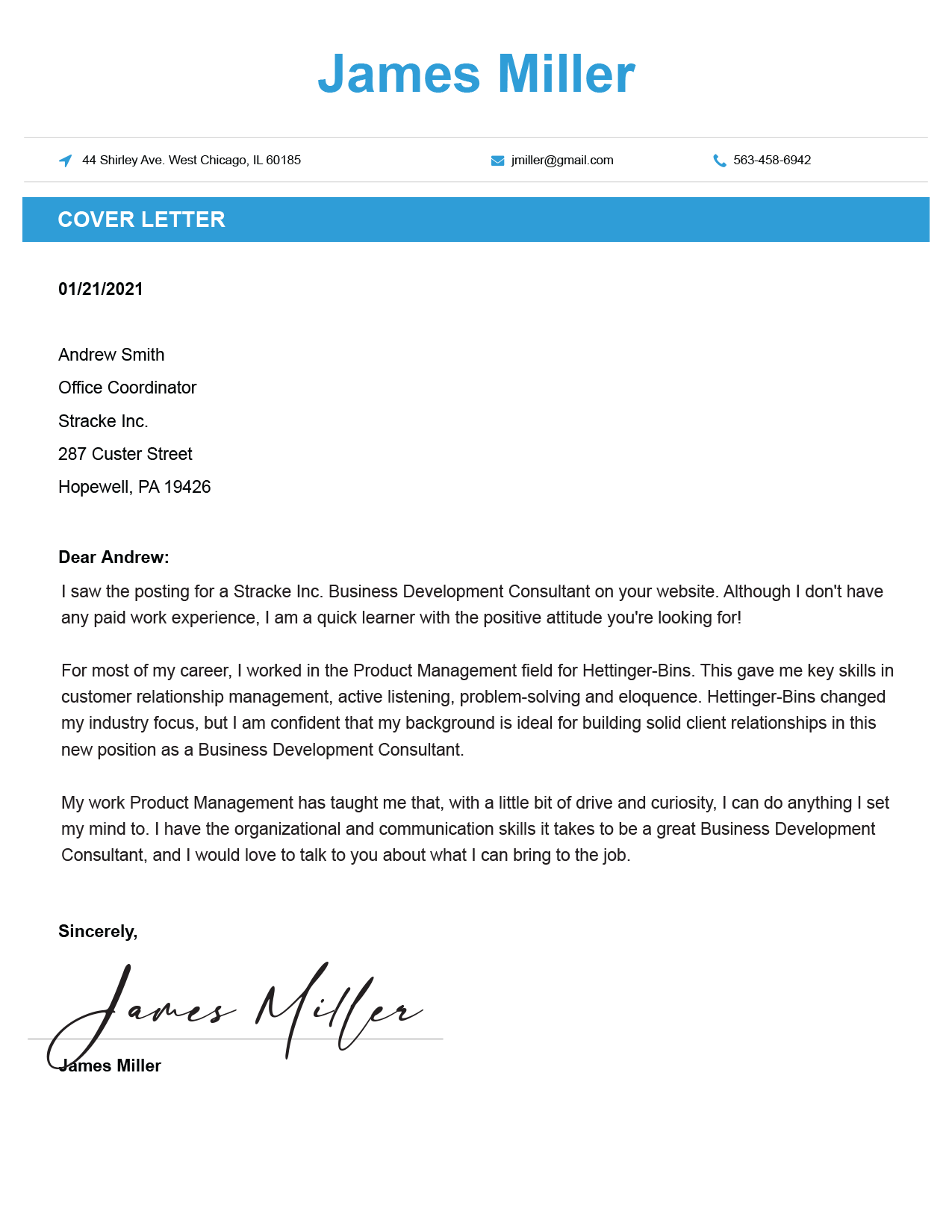IMPRESSIVE COVER LETTERS EASY ONLINE BUILDER
- Professional, out-of-the-box cover letters that are instantly generated by the most advanced technology available.
- HR-approved cover letter templates with pre-written examples that will get you an interview and increase your chances of getting hired.
- Proven to get a higher response rate from recruiters to help you land your dream job!
Millions have won jobs at top companies thanks to our cover letter maker
HOW TO MAKE A COVER LETTER?
CHOOSE YOUR
COVER LETTER TEMPLATE
Our professional, recruiter-approved cover letter templates are designed to help you create the perfect cover letter in just minutes, with our easy-to-use, step-by-step online builder.
SHOW WHAT
YOU'RE MADE OF
Not finding the right words to showcase yourself? We’ve added hundreds of pre-written, industry-specific examples to make it easier for you to build your perfect cover letter.
DOWNLOAD
YOUR COVER LETTER
Simply download your amazing cover letter to start impressing recruiters and get the job you want now!
PROFESSIONAL COVER LETTER TEMPLATES
The Rage is All About Us.
Sarah Chen
I loved the variety of available cover letter examples . They were so helpful in guiding me to write a successful cover letter!
Mark Taylor
The cover letter builder on ResumeBuild is a game-changer - it's so easy to use and has saved me so much time!
Samantha Wong
I was blown away by the quality of the cover letter templates!
Anthony Rodriguez
Thanks to the cover letter builder ResumeBuild, I was able to create a polished and professional-looking cover letter in no time.
Rachel Kim
I was struggling with my cover letter until I found ResumeBuild's cover letter templates - they made it a breeze!
David Patel
I was impressed by how easy and user-friendly the cover letter builder on that site was. It made the process much less intimidating.
Julie Nguyen
This cover letter templates were exactly what I was looking for. They helped me create a unique and eye-catching cover letter.
Daniel Lee
Resumebuild helped me build a customized cover letter to fit the job I was applying for. It really made a difference.
Laura Hernandez
I've always struggled with writing cover letters, but with ResumeBuild's builder, I was able to produce a high-quality letter in minutes.
Matthew Johnson
I loved the variety of cover letter templates, there was something for every industry and job level.
Samantha Green
If you're looking for a cover letter builder that's reliable and produces results, look no further than ResumeBuild.
Michael Nguyen
These cover letter templates helped me present my experience and skills in a clear and concise way. I definitely recommend them!
Kelly Chen
I was able to create a compelling cover letter that got me noticed by employers.
Tyler Jones
The cover letter examples on ResumeBuild are top-notch - I used one and got an interview!
Samantha Patel
Thanks to the cover letter builder, I was able to craft a cover letter that stood out from the crowd. I got a lot of positive feedback from employers.
Sophia Miller
I was a bit skeptical at first, but after using the product, I can honestly say it's one of the best out there. Highly recommend!
Alex Thompson
I was struggling to create a professional-looking resume & cover letter, but the builder on this site made the process so easy. Thank you!
Rachel Davis
The cover letter templates on this site were a lifesaver. They helped me land my dream job!
Jason Brown
I never knew creating a cover letter could be so easy. The step-by-step process on this site was so simple and straightforward.
Lauren Adams
I was impressed by the quality of the customer service. They were always available to answer my questions and provide support.
Maria Rodriguez
I was hesitant to pay for a service like this, but it was worth every penny. My resume and cover letter look amazing!
Tyler Williams
The cover letter builder on this site was so user-friendly. I was able to create a customized letter in no time.
Jessie Lee
I loved how the cover letter templates on this site allowed me to showcase my unique skills and experience. Highly recommend!
David Brown
Helped me land several interviews and ultimately get my dream job.
Rachel Kim
I was blown away by the quality of the resume and cover letter I created. I've already recommended it to several friends.
Emily Green
The cover letter templates on this site were so versatile. I was able to find one that fit my industry and experience perfectly.
Michael Davis
I was worried my cover letter would be too generic, but the templates on this site helped me create a letter that was tailored to the job I was applying for. Thank you!
 Frequently Asked Questions (FAQs) about Cover Letters
Frequently Asked Questions (FAQs) about Cover Letters
What You Need to Know About Crafting the Perfect Cover Letter
A cover letter is a document that accompanies your resume when applying for a job. It's typically a one-page letter that introduces yourself to the employer and highlights your skills and experience as they relate to the job you're applying for.
A cover letter gives you an opportunity to make a good first impression with a potential employer. It allows you to showcase your skills and experience and explain why you're a good fit for the job. A well-written cover letter can increase your chances of getting an interview.
Using a cover letter template can save you time and ensure that your cover letter is formatted in a professional and polished way. Templates can also provide guidance on what information to include and how to organize your letter. Additionally, many templates are customizable, so you can personalize your letter while still using a tried-and-true format.
Yes, you can use a cover letter example as a starting point for creating your own cover letter. Examples can provide inspiration for how to structure your letter and what kind of language to use, but be sure to customize the content of your letter to fit the specific job you're applying for.
To use ResumeBuild's cover letter builder, start by selecting the template you want to use and then enter your personal information and the details of the job you're applying for. From there, you can customize the content of your letter to fit your skills and experience, and use the builder's editing tools to make any necessary changes. Once you're happy with your letter, you can download it as a PDF or Word document and submit it along with your resume.
Your cover letter should include a brief introduction, a description of your relevant skills and experience, and a closing statement. It should be tailored to the specific job you're applying for and highlight how your skills and experience match the requirements of the job.
A cover letter should generally be one page or less. It should be concise and focused on highlighting your most relevant skills and experience as they relate to the job you're applying for.
Yes, it's a good idea to customize your cover letter for each job you apply for. This allows you to highlight how your skills and experience match the requirements of the specific job and company.
You should avoid using cliches, making spelling or grammar errors, and using a generic template. It's also important to avoid simply repeating what's on your resume, and instead use your cover letter to explain how your skills and experience make you a good fit for the job.
Yes, a cover letter builder can be a helpful tool to create a professional-looking cover letter quickly and easily. It can provide templates, examples, and guidance on how to write a strong cover letter that highlights your skills and experience.
A resume is a document that outlines your work experience, education, and skills, while a cover letter is a document that accompanies your resume and provides a more personalized introduction to the employer. While your resume provides a summary of your qualifications, your cover letter allows you to explain why you're a good fit for the specific job you're applying for.
You should address your cover letter to the hiring manager or the person responsible for hiring for the position. If the job posting doesn't include this information, try doing some research to find out who the hiring manager is. If you're unable to find a specific name, you can address your cover letter to "Dear Hiring Manager" or "To Whom It May Concern."
The format of your cover letter should be professional and easy to read. Use a standard font such as Times New Roman or Arial, and keep the font size between 10-12 points. Use a business letter format, with your name and contact information at the top, followed by the date, the employer's name and contact information, a brief introduction, a description of your skills and experience, and a closing statement.
If you're applying for a job online, you should include your cover letter as a separate document along with your resume. If you're sending your application by email, you can either attach your cover letter as a separate document or include it in the body of the email.
It's not necessary to sign your cover letter, especially if you're sending it electronically. Instead, you can include a digital signature or simply type your name at the end of the letter.
To make your cover letter stand out, focus on highlighting your most relevant skills and experience as they relate to the job you're applying for. Use specific examples to demonstrate your qualifications, and try to personalize your letter by including information about the company or the position. Avoid using generic language or templates, and make sure to proofread your letter carefully for spelling and grammar errors.

